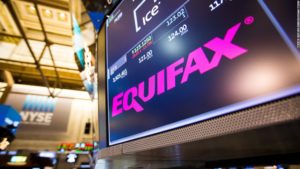As the digital revolution transforms the way we live our lives in the 21st century, it has become intertwined with the world of crime, vandalism and global warfare. As the world becomes more interconnected than ever, with the cloud, big data and the Internet of Things (IoT) carrying capabilities to new heights, billions of endpoints have simultaneously been opened up to cyber criminals.
With old guard tech giants scrambling to meet the cybersecurity demands of today, niche startups have popped up to create a rapidly evolving and fast-paced cyber landscape, interacting with governments, consumers and organizations of all types and sizes.
In the new year, we can expect more spectacular data breaches following 2017’s historic year. Some of last year’s worst attacks include those at Equifax, Yahoo and Uber. As organizations continue to use outdated technology, they expose themselves to cyber risk through means such as old anti-virus software, lack of patching and systems such as Windows XP and outdated WordPress.
A given shakeup in the industry this year will be the General Data Protection Regulation (GDPR), which takes effect in May. The regulation, issued by the European Parliament, the Council of the European Union and the European Commission, intends to strengthen and unify data protection within the EU, yet many warn it could result in chaos as organizations remain completely unprepared to meet its demands.
As more and more organizations adopt cloud computing in efforts to improve efficiency and flexibility at a discounted cost via high-flying platforms such as market leader Amazon Web Services (AWS), security teams have been unable to keep up with the pace. For one, 2018 continues to face a global cybersecurity skills shortage, with a recent report by ESG/ISSA indicating nearly 30% of organizations are lacking adequate cloud security skills. This, alongside a failure to employ proper security policies, processes and controls, should lead to more vulnerabilities, data breaches and compliance violations.
With today’s cyber landscape becoming more complex, high-end security-as-a-service providers should continue to reap rewards as enterprises weigh it more reasonable to outsource their security tasks. The list of vendors set to benefit remains long, including players such as Symantec, FireEye, Cisco and CrowdStrike.
2018 should see its fair share of industry M&A as more enterprises demand integrated security technologies in a common architecture, leading companies to seek out integration around a single platform. The rise of artificial intelligence should work to enhance the efficacy and efficiency of existing tools.
























